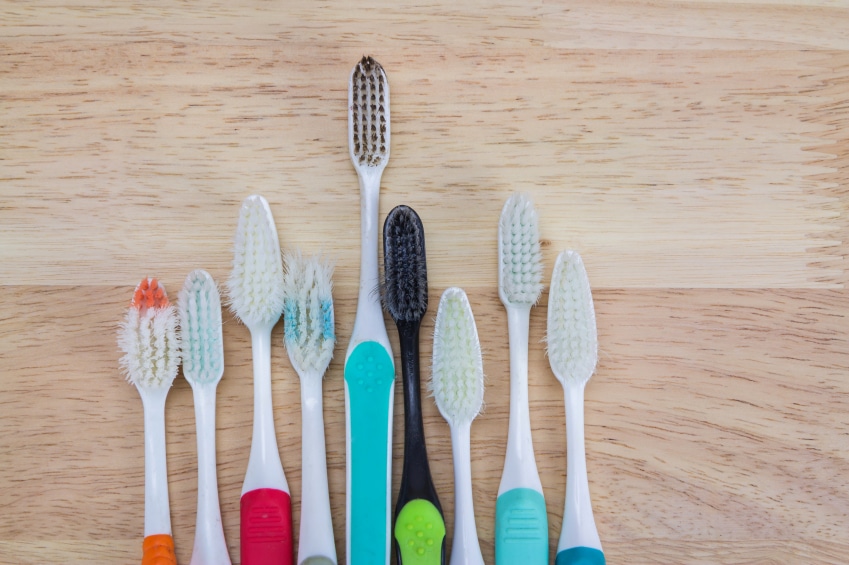
Tooth brushing plays an important everyday role for personal oral hygiene and effective plaque removal. Appropriate toothbrush care and maintenance are also important considerations for sound oral hygiene. The ADA recommends that consumers replace toothbrushes approximately every 3–4 months or sooner if the bristles become frayed with use.
In recent years, scientists have studied whether toothbrushes may harbor microorganisms that could cause oral and/or systemic infection. We know that the oral cavity is home to hundreds of different types of microorganisms; therefore, it is not surprising that some of these microorganisms are transferred to a toothbrush during use. It may also be possible for microorganisms that are present in the environment where the toothbrush is stored to establish themselves on the brush. Toothbrushes may even have bacteria on them right out of the box since they are not required to be sold in a sterile package.
The human body is constantly exposed to potentially harmful microbes. However, the body is normally able to defend itself against infections through a combination of passive and active mechanisms. Intact skin and mucous membranes function as a passive barrier to bacteria and other organisms. When these barriers are challenged or breached, active mechanisms such as enzymes, digestive acids, tears, white blood cells and antibodies come into play to protect the body from disease.
Although studies have shown that various microorganisms can grow on toothbrushes after use, and other studies have examined various methods to reduce the level of these bacteria, there is insufficient clinical evidence to support that bacterial growth on toothbrushes will lead to specific adverse oral or systemic health effects.
General Recommendations for Toothbrush Care
The ADA and the Council on Scientific Affairs provide the following toothbrush care recommendations:
Do not share toothbrushes. Sharing a toothbrush could result in an exchange of body fluids and/or microorganisms between the users of the toothbrush, placing the individuals involved at an increased risk for infections. This practice could be a particular concern for persons with compromised immune systems or existing infectious diseases.
Thoroughly rinse toothbrushes with tap water after brushing to remove any remaining toothpaste and debris. Store the brush in an upright position if possible and allow the toothbrush to air-dry until used again. If more than one brush is stored in the same holder or area, keep the brushes separated to prevent cross-contamination.
Do not routinely cover toothbrushes or store them in closed containers. A moist environment such as a closed container is more conducive to the growth of microorganisms than the open air.
Replace toothbrushes at least every 3–4 months. The bristles become frayed and worn with use and cleaning effectiveness will decrease.Toothbrushes will wear out more rapidly depending on factors unique to each patient. Check brushes often for this type of wear and replace them more frequently if needed. Children’s toothbrushes often need replacing more frequently than adult brushes.
For more information about caring for your oral health please visit http://www.ada.org/